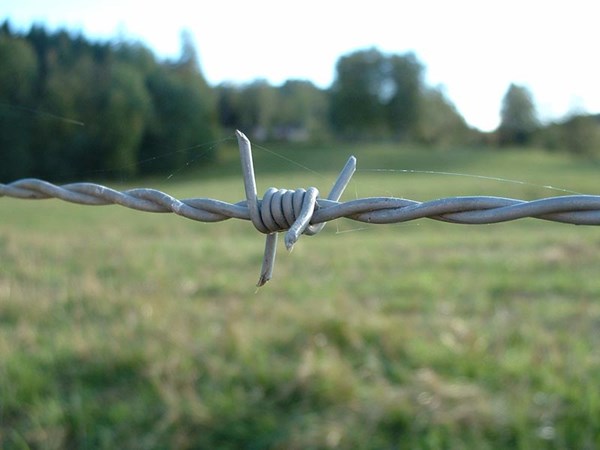Russia continues to reinforce Donbas border
Russian border guards are placing barbed-wire barriers and digging anti-tank ditches on the border with the so-called Luhansk and Donetsk People’s Republics (LPR and DPR), Alexander Belokobylsky wrote in an article for Radio Liberty.
There is evidence for this in stories on YouTube and in satellite images from Google. Russia’s border construction process can also be monitored using information from the country’s state purchases website.
The official explanation is the fight against smuggling.
The anti-transport ditches appeared along many sections of Russia’s border with the separatist-controlled Donbas territories. The fortifications can be seen on satellite images in Google Maps.
“The ditches lie in places where there are no natural barriers to vehicle movement – plantations, beams, forests, ponds, rivers. Close to settlements there are generally no ditches, since the border cannot be crossed in secret there. Furthermore, part of the state border line passes between the fields of Ukrainian and Russian villages, and intersects forest belts. And ditches are usually dug in such belts in order to prevent vehicles from crossing on dirt roads,” the article states.
Google Earth can help determine when the ditches appeared, since it contains a timeline instrument, which can be used to view the past of a territory that interests us, the journalist noted.
As historical satellite images show, a certain number of the ditches on the border are from pre-war times. However, it is significant that these barriers have been maintained “in working condition”, and are not allowed to become overgrown or to disappear. Both those in Russian territory and those in the areas of Ukrainian territory controlled by the Russian-controlled LPR and DPR occupation administrations have been dug again, the article notes.
Shcherbak (Donetsk province) lay on the border between Ukraine and Russia in 2013 and 2016.
However, there are also ditches which have appeared under the occupation. In several cases, old barriers have been improved or added to with new ditches by the FSB’s border service (or the “border guards of the ministries of state security” of the L/DPR, which are also supervised by Russia’s FSB).
Information from the official website of the Unified Information System in the Field of Purchases demonstrates that work to reinforce the border has continued this year too.
Notably, a tender to the amount of 3,228,876 rubles ($51,500 USD) for barbed wire was announced in March. In 2017, border control purchased barbed wire at 87,000 rubles ($1388 USD) per ton, which means that this year it has acquired roughly 36 tons. A kilogram of it spans 10 meters, so that equates to 360 kilometers of barbs, the journalist writes.
In March and April, tenders of more than 1.8 million rubles were also held for collapsible fences.
“This could really be for the fight against smuggling. In the temporarily occupied Donbas territories, an effective monopoly on power belongs to the law enforcement officers who work under the supervision of Russia’s FSB. Accordingly, the FSB also controls the consumer goods market, and consequently any smuggling is a direct loss for the Russian intelligence agents. However, there is also another reason for tightening control on the border with the Donbas. Russia needs to keep to a minimum the likelihood of weapons and ammunition previously brought in from Russia coming back in the opposite direction in an uncontrolled manner,” the journalist believes.
